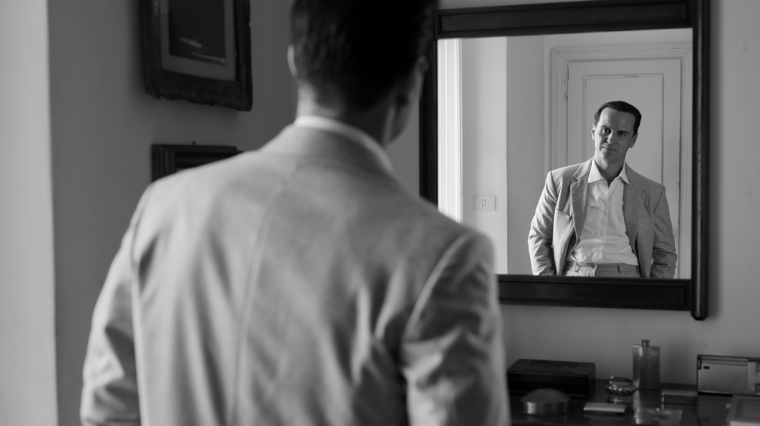
Andrew Scott in Ripley
RIPLEY
For this week's article, I planned on reviewing Netflix's Scoop, a biographical drama on the famed 2019 BBC interview regarding Prince Andrew's association with Jeffrey Epstein. I'm still eager to see that movie despite, and kinda because of, Gillian Anderson's latest approximation of a Brit. (I loved her as The Crown's Margaret Thatcher, but seriously: Does anyone remember what the American X-Files star's voice actually sounds like? She's been doing English accents for ages now.) Yet I couldn't find the time to squeeze that 100-minute film into my schedule, given that I unexpectedly devoted eight solid hours to another Netflix release: Ripley, which is, hands down, my thus-far-favorite screen entertainment of 2024. I suppose I could've viewed Scoop after completing writer/director Steven Zaillian's eight-part limited series. I didn't, though. I just started watching Ripley all over again.
Ordinarily, limited series aren't something I would cover. Then again, I'm rarely able to see one in its entirety over the course of a single weekend. Plus, as shot by There Will Be Blood cinematographer Robert Elswit, Ripley looks more like a movie than 95 percent of the movies I see. Presented in gloriously crisp black-and-white with expressionistic shadow play, Zaillian's take on Patricia Highsmith's iconic 1955 novel The Talented Mr. Ripley looks utterly phenomenal. (One nighttime image of a tree-lined street in Rome practically made my jaw drop; it looked less like real life than exactingly painted real life – specifically, one of the symbolic Caravaggios on frequent display here.) Magically, the eight-parter plays just as well, and does so without, in any significant way, drawing unfavorable comparisons to Anthony Minghella's deservedly celebrated The Talented Mr. Ripley from 1999. I bow to no one in my adoration of that film, but Zaillian's Ripley is a different beast entirely. Where Minghella's adaptation was luscious, passionate, and emotional, Zaillian's is chilly, controlled, and cerebral – an entertainment for the head rather than the heart. But yowza did this thing make my head spin. Not for nothing, but at least once per episode, it also made me laugh my ass off.
If you're familiar with the 1999 version, this Ripley story is pretty much the same, yet follows Highsmith's original narrative more faithfully. (You might find yourself missing the character of Meredith Logue, so memorably played by Cate Blanchett, until you remember that Meredith was Minghella's invention, not Highsmith's.) In Andrew Scott's sleek and slithery portrayal, our latest Tom Ripley is a small-time, New York-based grifter who, through some convenient misinformation, is hired by shipbuilder Herbert Greenleaf (Kenneth Lonergan) to travel to Italy and return with his trust-funded son Dickie (Johnny Flynn). It's possible that Zaillian's biggest alteration to the material lies in the casting of Tom and Dickie, as the figures are no longer wayward 20-somethings but unquestionably middle-aged, making it somewhat odd that Greenleaf senior would be so adamant about his heir coming home to run the family business. (If Dickie didn't show any inclination to do so before hitting 40, why would he now?) Yet off Tom goes with a free voyage, a per diem, and, in a character hitch that will continue to pay off handsomely, a morbid fear of the open water. He eventually finds Dickie on an Italian beach, sunning himself alongside his American girlfriend Marge (Dakota Fanning). And before long, as in 1999, Tom will have completely insinuated himself into their lives, and with horrific consequences.

But first, there's tedium, and I can't remember the last time cinematic renderings of dullness and exhaustion were quite so riveting. Zaillian signals his approach in the opening scenes of Tom pulling off a series of petty scams, demonstrating just how much commitment and stringent detail are required to, for instance, nab a fraudulently procured insurance check. Yet over and over in Ripley, Zaillian makes high comedy out of practical tasks. Consider the stairs. After Tom finds Dickie's Italian address, he's forced to climb a mountain's worth of steps to reach the villa, which we practically watch him do in real time. (About halfway through the ordeal, Tom has to take a breathing break.) Once he reaches the summit, a housekeeper informs Tom that Dickie is actually at the beach. So down down down Tom goes, each laborious foot forward funnier than the last. This motif is almost dementedly continued throughout Ripley: Tom has to traverse Vesuvius to get to his hotel room; the fifth-floor Roman flat he eventually secures has a constantly out-of-commission elevator; a detective, late in the series, orders Marge to visit him at his office so he won't have to climb her stairs a second time. Yet every chore surrounding Tom's schemes seems unduly protracted, including the removal of dead bodies, and you begin to sense, with a giggle, that this is what truly irks our anti-hero the most. Not that he has to kill people, but that the process takes so damned long.
Fans of the 1999 Ripley will, of course, remember the murder in the boat, a sequence that lasted roughly five minutes. Here, the killing and its aftermath take up a good half-hour of the third episode, simply because there's so much stuff for Tom to do – dispose of the body, fill the boat with rocks, drown the boat – all without any other seafarers noticing. Tom finds himself in a similar yet considerably more complex situation in episode five, when the midnight removal of another corpse requires him to sneak the victim down five flights of stairs without waking neighbors or the landlady. (Naturally, the elevator is again under repair.) He then has to stash the body into the deceased's car, then abandon the car and the corpse out of town, then walk home, then clean up the blood tracks he left on the stairs … and then, realizing he finished the job improperly, Tom has to walk back to the car. By this point, with Tom's pathetic venture also interrupted on the street by late-night passers-by, one of them a dog, I was in stitches, laughing so hard at Tom's agonizing time-suck (and the silent-comedy reactions of a curious kitty) that I almost forgot how completely this bravura sequence also kept me on edge.
And make no mistake: For all of Ripley's witty visual flourishes and abject hilarity, Zaillian's achievement is thrillingly, deliciously nerve-racking. In keeping with Highsmith style, Zaillian tones down the overt queerness of Minghella's adaptation, so there's no moment akin to Matt Damon playing chess with Jude Law and suggesting he share the guy's bath. (This Ripley borders on the asexual – he doesn't appear to covet Dickie so much as Dickie's things – though Scott performs riotous subtext on Tom's unconvincing statement “I like girls.”) But after Tom's first high crime is committed, and he finds himself living dual lives under two names, you spend the series' next five hours in a state of anxious anticipation – waiting, like Tom himself, for the other shoe to drop. Certainly, Marge is waiting for that shoe, and I loved how Zaillian and Fanning made the young woman suspicious of Tom's motives from minute one. Unlike Gwyneth Paltrow's initially friendly, trusting Marge, Fanning's seems born with a highly functional bullshit detector, and you sense it working on overdrive through every one of her insinuating exchanges with Tom; the two stare at each other with such tight, tense fake smiles you expect their faces to crack.
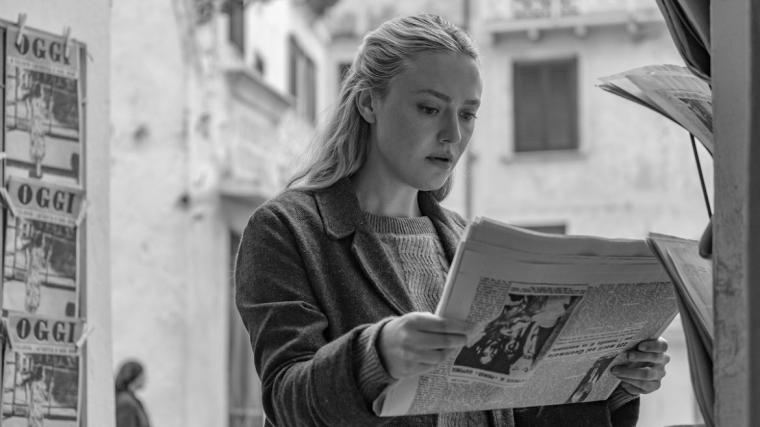
Meanwhile, Zaillian ramps up the dread with the arrival of Inspector Pietro Ravini (the magnificent Maurizio Lombardi), who's tasked to investigate a murder before investigating a disappearance, and who appears to be one of the only adults in Ripley, aside from the titular figure, who's actually good at his job. Tom proves to be a sensationally able killer, and in his non-violent moments, he also looks to be a gifted forger, painter, and even book editor – he's clearly a talented Mr. Ripley. But Dickie's own artworks are hysterically bad, and the snippets we hear of the book Marge is writing sound irredeemably awful, and everywhere he goes, Tom is surrounded by supercilious or inept hoteliers and maintenance men and cops; no one seems capable of a decent day's work. No one but Ravini, and while he is fooled by a rather laughable face-to-face toward the series' end, his teasing cat-and-mouse routine continually escalates both the intensity and humor of Tom's predicament. Highsmith designed the character so we'd (mostly) want him to get away with murder, but that doesn't mean that Ravini putting all the pieces together wouldn't also be enormously satisfying.
Although not everything in Ripley works with the panache of its finest sequences, my only major gripe lies with the miscasting of Johnny Flynn – not because he's too old for the role of Dickie, but because he's too boring for it. This may just be a personal aversion; the guy also left me cold when playing a younger Anthony Hopkins in last month's One Life. Yet while Flynn couldn't be expected to replicate Jude Law's insane 1999 magnetism, we should've at least been left with some sense of what, aside from his wealth, draws Tom and Marge to Dickie. Flynn, though, performs every scene with an emotionless ennui that comes close to looking like not giving a damn; even when Dickie catches Tom imitating him while dressed in Dickie's clothes, nothing about the actor's affect suggests outrage or shock or even simple confusion. This Dickie is wholly unreadable and colossally uninteresting, and as such, it's easy to forget about him – or wish that you could.
That, however, is where my major complaints begin and end, as I gobbled Zaillian's series up with a spoon and, as referenced at the start, immediately dove in for seconds. Design-wise, the work is close to flawless, and the stunning European architecture and art on display would be ravishing even if Elswit didn't light everything so thunderously well. Composer Jeff Russo's score is majestic and evocative – and employed, especially in the longer set pieces, surprisingly sparingly. Beyond the first-rate Fanning and unimpeachable Lombardi, there are terrific supporting turns by Margherita Buy, Bokeem Woodbine, Eliot Sumner in the Philip Seymour Hoffman role (thankfully making comparisons between the two impossible), and, in a juicy cameo, John Malkovich, who played Highsmith's sociopath in 2002's Ripley's Game. (You've never before witnessed subtle hamminess like what unfurls when Malkovich and Scott square off during their games of Conversational Chicken.) And through the whole of this masterfully written and directed saga is, of course, the diabolically sly Andrew Scott, who keeps you forever alert to the most microscopic changes in Tom's expressions and demeanor, and who routinely makes you nervously chuckle when you're not nervously aghast. Is the 47-year-old the wrong age for Ripley? Maybe. Would I have preferred another actor in Scott's role? Not in a million years.
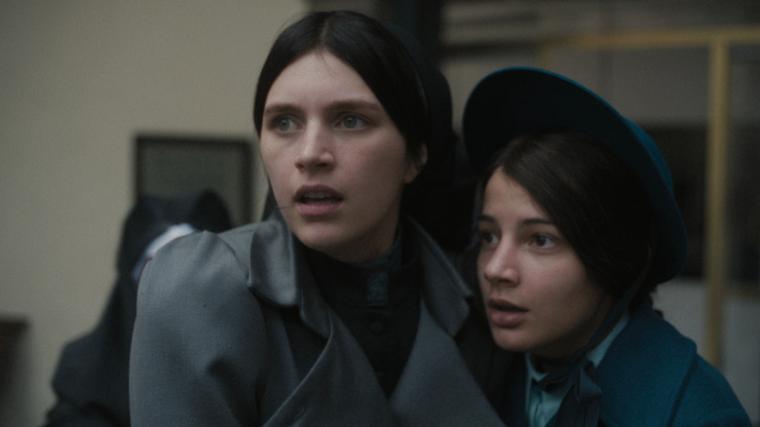
Oh yeah … and I saw a few cineplex releases this past weekend, too.
THE FIRST OMEN
I dunno, maybe I was just put off by the redundancy. A young novitiate travels from middle America to Italy to become a nun in full standing. She's warmly greeted by a kindly priest and another, saltier novitiate, as well as a domineering Mother Superior. She suffers frightening hallucinations and premonitions of encroaching evil. She witnesses a shocking suicide. She winds up engulfed in a sinister plan, orchestrated by a wing-nut sect of the Catholic church, to impregnate an unwilling female who will purportedly give birth to the savior of us all. Didn't we, like, just see this movie, only it starred Sydney Sweeney and was titled Immaculate? Yes, we did – not even three weeks ago, in fact. But here we are again in the convent horror of director/co-writer Arkasha Stevenson's The First Omen, even though there's no convent (rather an orphanage), and even though it's not horror we're experiencing so much as déjà vu.
All told, this isn't a bad attempt at rebooting a long-defunct fright-flick franchise through an unasked-for prequel. Playing our heroine, a young performer with the wonderful name Nell Tiger Free is a lovely presence whose descent into the feral is legitimately impressive; one of her later scenes finds Free doing a solid approximation of Isabelle Adjani's legendary subway breakdown in Possession. Stevenson's movie looks and sounds appropriately 1971, with Mark Korven's score, filled with unholy wails and chants, doing a fine job of echoing Jerry Goldsmith's Oscar-winning compositions for 1976's The Omen. (Fans will likely appreciate this film's nod to “It's all for you, Damien!” and its photographic cameo by a long-deceased Omen star.) There are also several laudably gory moments, among them a truly unsettling scene of demonic childbirth and our heroine's unfortunate attempt at pacifying a dude who just got sliced in half by a truck.
Still, The First Omen is largely and unfortunately familiar, with the plotting ranging from silly to downright absurd, talents such as Bill Nighy and Sonia Braga unable to make formulaic roles engaging, and Nicole Sorace woefully miscast as a 12-year-old, given that she looks 18 at bare minimum, especially when clothed in the school uniforms we see donned by kids roughly the age of eight. (It was like seeing Isabelle Fuhrman in one of her Orphan movies, but without the built-in “dwarf in disguise” kicker.) Plus, while there's inherent benefit-of-the-doubt required of these types of Satanic showcases, a few of the developments were unmistakably puzzling. After witnessing one of their nun teachers not only hang herself but also set herself on fire, would the orphanage's kids really be so happy-go-lucky during a field trip held the very next day? Was there at least a child therapist along for the trip? I enjoyed myself for a while at Stevenson's feature debut yet grew increasingly irritated and bored, and by its climax, I was additionally bummed in realizing that, Heaven help us, a franchise was developing. I admired Free's feature-length Mia Farrow turn well enough, but I'm not sure how interested I am in seeing her become Linda Hamilton.
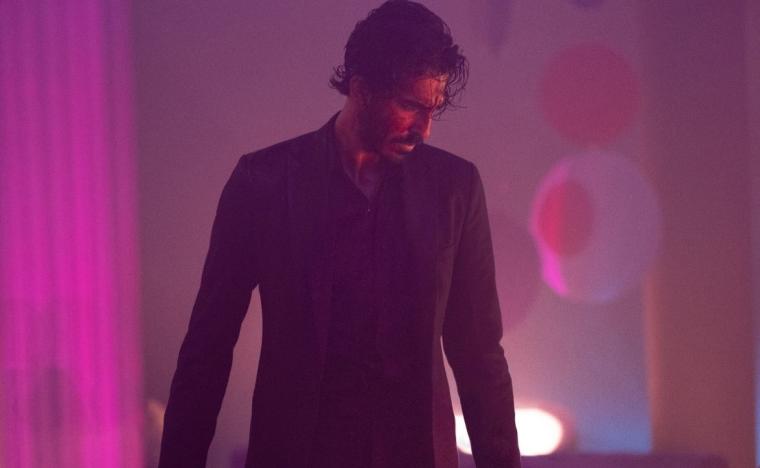
MONKEY MAN
There will no doubt be others, yet director/co-writer/star Dev Patel's über-violent revenge thriller Monkey Man is the first 2024 release whose critical acclaim I absolutely don't understand. With the film currently sitting with an 88-percent “freshness” rating on Rotten Tomatoes, I haven't done a deep dive into the reviews, but the adjective I'm most commonly seeing in review snippets is “fun.” That's exactly, to my eyes, what the movie isn't. Granted, there's inherent amusement in seeing the former Slumdog Millionaire sweetheart all ripped and sweaty and more than ready to stab an adversary in the neck with a rusty blade. Still, Patel's script (co-written by Paul Angunawela and John Collee) shrewdly name-dropping John Wick near the beginning is no reason to excuse this thing for being a tired John Wick wannabe, right down to the appearance of a lovable pooch whom, in a nod to Patel's usual screen persona, Monkey Man's creative force kindly allows to live.
Maybe Patel is being given a critical pass for incorporating Indian mythology – specifically, tales of the half-human/half-monkey deity Hanuman – and real-world caste-system suffering into the mix, thereby making his feature debut “about” something. Or at the very least, about more than the usual two-hour excuse for brutal mano a mano combat and elaborately designed face-offs involving interchangeable hired goons and at least one scene set in a high-end strip club in which the debauchery is signaled by neon-purple lights and blaring electronica and the sight of two women making out. Yet as Patel's unnamed avenger (he's cited as “Kid” in the credits, even though the star is 33) progressed from the realms of underground boxing to the unspeakably posh dwellings of the rich and sadistic to the humble quietude of a Mumbai temple and then back again, it felt as though “Kid” was merely entering one terminally clichéd locale after another. I may have audibly groaned when Patel, à la Dances with Wolves, learned to love and appreciate the gentle kindness of the temple folk … and definitely audibly groaned when a bunch of those folks showed up at the end to help Kid kick the crap out of his one-percenter nemeses. (All but the token female psychopath, naturally, whose demise, per genre requirements, must come at the hands of another female.)
Worst of all, while the action scenes may be energetic, they leave no residue; an hour after seeing the film, I couldn't recall a single instance of inventive choreography – it all certainly keeps moving, but nothing you see stays in your brain for more than the amount of time it takes to occur on-screen. (By contrast, John Wick 4 probably boasts a half-dozen wildly imaginative sequences that action fans will remember for years; it woulda been nice for Patel's debut to deliver even one.) To be fair, Patel does suggest some acuity as a filmmaker, and there's a wonderful bit early on in which, with cinematographer Sharone Meir's camera racing alongside it, a purloined pocketbook makes its way through seemingly dozens of Indian hands before finally falling into Patel's. It's an appealing, giddy throwaway bit – the only time I experienced the “fun” so many others are raving about. It also made me hope that, for Patel's next directorial endeavor, he ignore the option of a Monkey Man II in favor of something closer to Ocean's 11.
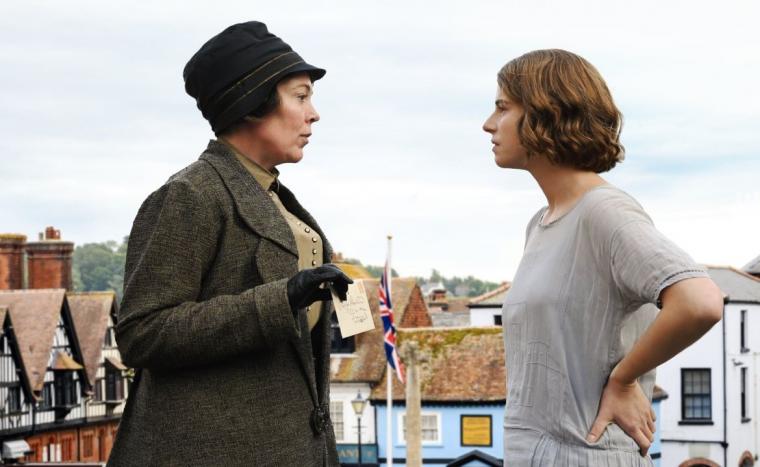
WICKED LITTLE LETTERS
When Olivia Colman and Jessie Buckley were last paired on-screen, they actually weren't, because writer/director Maggie Gyllenhaal's 2021 The Lost Daughter cast both talents as the same character at different points in her life. (Both actors also scored Oscar nominations.) Colman and Buckley look nothing alike, of course, and aren't even of the same nationality, as the former is English and the latter Irish. Yet their temperaments as The Lost Daughter's admittedly terrible mom Leda Caruso were so in-sync that the thought of them sharing scenes together left you with a sense of giggly anticipation. Director Thea Sharrock's and screenwriter Jonny Sweet's Wicked Little Letters finally makes good on that feeling, casting Colman as a repressed, devout British wallflower and Buckley as a ribald, profane Irish firecracker and letting us witness the performance magic that ensues. It's marvelous. The film itself is less so, yet also not disappointing enough to take away from Colman's and Buckley's combined efforts, as well as the obvious joy they're taking in speaking, per the film's 1920 setting, the most unspeakable things.
With Sweet's story inspired by a recently unearthed true-life tale, Colman plays Edith Swan, a middle-aged, intensely pious nobody in the tiny hamlet of England's Littlehampton who still shares a bedroom with her parents, a sweet doormat played by Gemma Jones and an unholy tyrant played by Timothy Spall. Following a mild quarrel with Buckley's next-door neighbor Rose Gooding, Edith begins receiving a series of anonymous letters, 19 in all, mostly devoted to unprintable denigration of the good woman's character and suggestions for what objects she may shove up her unprintable orifices. Edith is considered a saint for bearing the humiliation with grace. Rose is made a pariah for being the crime's most obvious suspect, given that she's a single mother (!) with a Black boyfriend (!!), and also the frequently drunk (!!!) mother of a young daughter who wants to play guitar (!!!!). After Rose is arrested, the film becomes about how Littlehampton's only female cop – one who introduces herself, out of necessity, as “Woman Police Officer Gladys Moss” – tries to get Rose exonerated, not at all convinced, particularly due to the male stupidity surrounding her, that the Irish immigrant is responsible for the harassment.
To cut to the chase, Wicked Little Letters – such a kickass title! – is pure Brit-com, overflowing with easy stereotypes, pleasant period trappings, and a heavy-handed social message delivered with the lightest of touches. Characters just say “f---” more often. What will make this palatable for the PBS crowd is that no one except Buckley's Rose much enjoys the profanity; characters practically turn to their fainting couches whenever a new missive is read. This comic gambit is cute for a while and eventually tiresome, and I'd argue that there's zero mystery is whom the ultimate culprit proves to be – it's so immediately obvious that the ruse is given away before the movie is even half-over. Yet Sharrock's overly docile entertainment, despite the comically rough language, is appealing enough, even if the color-blind casting of the delightful Anjana Vasan as investigator Moss doesn't make much sense. (These sexist, xenophobic British louts of 1920 dismiss Gladys for being a woman, but don't at all reference her being an Indian woman?) The speed and variety also picks up after Moss recruits a number of equally unconvinced neighbors, among them British acting legend Eileen Atkins, to join her in recon work. And there's literally no scene in which Colman and Buckley aren't phenomenal, either together or apart, and your mind swims at all the possible opportunities the duo may share together in the future. Let's rally for another All About Eve! Another Thelma & Louise! Another The Heat! Seriously, the possibilities are endless!
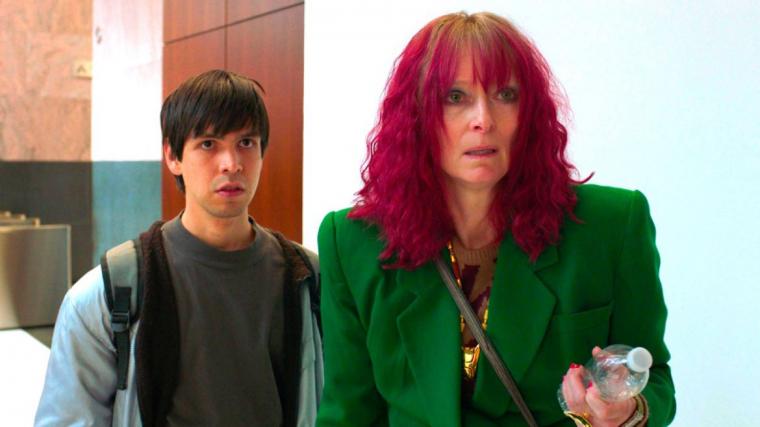
PROBLEMISTA
How much is too much Tilda Swinton for one movie? For a long time, I presumed the answer was “It's never too much Tilda Swinton for one movie.” But then I caught writer/director/star Julio Torres' Problemista at Davenport's Last Picture House, and I now think I have the correct answer. I applaud the local theater for securing the Torres film; after the venue's February booking of The Zone of Interest led to a steady run of audience-friendly blockbusters, I was starting to worry that we'd only be getting titles of the Godzilla and Ghostbusters and Kung Fu Pamda variety from here on. I needn't have been concerned: This A24 comedy is gratifyingly loopy and most assuredly not designed for a mass audience. Instead, it seems expressly designed for worshipers at The Altar of Tilda – and even some of us may have a few problem(ista)s with it.
Torres has stated that his feature debut, while admittedly fantastical in visual terms, is semi-autobiographical, and it's easy to see it as such, given that it's about a young native of El Salvador, Torres' Alejandro, who relocates to New York in the hopes of securing a toymaking career with Hasbro. Problemista demonstrates Alejandro's eternal struggles attempting to secure a work visa while suffering through a series of humiliating temp jobs, one of which leads him to Swinton's Elizabeth, a disreputable art critic seeking to secure a gallery showing and sale for her deceased artist husband. (That said spouse, played in flashback by RZA, had himself cryogenetically frozen in hopes for a miraculous cancer cure is one of those touches that make you say, whimsically, “Oh, A24!”) But there are a few impediments to our adoring Alejandro as much as Torres might wish. For one thing, his toy ideas are dreadful, as anyone thinking they might make a hit our of a Barbie doll with crossed fingers behind her back (to show her untrustworthiness) or a Slinky that refuses to walk down stairs, alone or in pairs (to teach kids that life doesn't always play by the rules), deserves to be a Hasbro also-ran. For another, Alejandro is weird. Torres is a handsome guy with a beautifully open face for naïve comedy, but Alejandro doesn't seem like he's from El Salvador; he seems like he's from Mars. Even his hopping little walk – forward motions suggesting that his shoes are made of springs – imply a creature totally unused to Earth's gravity.
I guess it makes sense, then, that Alejandro would gravitate toward the similar martian that is Swinton's Elizabeth. Yet while the actor is firing on all cylinders here – shrieking to the heavens, making mincemeat of helpful servers, apparently reserving all of her reams of makeup strictly for her hair – a little of Swinton's unleashed dragon lady goes an awfully long way. And even when I was enjoying her tirades, especially whenever she yelled at someone so loudly that they were forced to quietly retort and Elizabeth promptly accused them of screaming at her, it's never made remotely clear what Alejandro sees in this figurative (and, as presented, sometimes literal) monster aside from go-for-broke tenacity. I'd argue that could've perhaps been presented without quite so much performative sturm and drang. While I'm glad that I saw Problemista, and enjoyed any number of its deliriously Charlie Kaufman-esque set pieces (particularly the upward-mobility complex that fittingly leads to nowhere), I still left feeling that the human part of this very human story went missing. And that Tilda Swinton, like any intoxicant, might be best experienced in limited doses.








